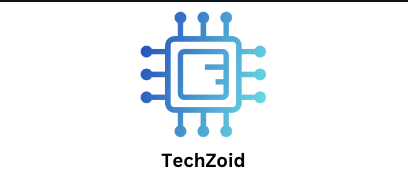What Is An AI Blueprint Takeoff Software?
An artificial intelligence-powered digital tool called AI blueprint takeoff software is made to automatically evaluate building drawings, or blueprints, and extract accurate dimensions, material amounts, and other crucial information required for project estimating. AI takeoff systems can scan, evaluate, and quantify blueprint data in a matter of minutes, in contrast to conventional techniques that mostly rely on manual measurement and interpretation.
Advanced computer vision and machine learning (ML) techniques are used by the program to recognize structural features including windows, doors, walls, piping, and electrical layouts. After that, it transforms this data into precise cost estimations and material amounts. In essence, the software simulates a human estimator’s task, but it does it more quickly and reliably, which lowers the possibility of human error or oversight.
How It Operates
The AI blueprint takeoff software operates through a series of interconnected steps:
Uploading the blueprint:
Digital plans, often in CAD, PDF, or BIM formats, are uploaded into the program to start the process.
Recognition Driven by AI:
The technology automatically recognizes and labels elements in the blueprint using pattern recognition and image recognition. It can differentiate between various kinds of walls, structural beams, electrical circuits, and flooring materials, for instance.
Measurement and Extraction of Data:
After that, the program takes exact measurements and dimensions straight out of the design. Repeated measurements or manual scale setup are no longer necessary thanks to this procedure.
Estimating Quantity and Cost:
The program determines the necessary amounts of materials and their related costs based on predefined criteria or integrated cost databases. This makes it possible to estimate costs quickly and using data.
Creating Reports:
Ultimately, thorough reports and summaries are produced, giving project managers and estimators thorough knowledge of labor expenses, material requirements, and total project budgets.
Important attributes and capabilities
AI blueprint takeoff software is quite useful for contemporary building projects since it has many sophisticated capabilities.
Without the need for human assistance, automated object detection recognizes and classifies objects in drawings.
Teams may collaborate remotely via cloud-based collaboration, which gives them real-time access to the same project data.
Integration with Estimating Tools: Easily connects with estimating and project management programs like Bluebeam, PlanSwift, or Procore.
Scalability and Adaptability: Gains knowledge from project data and user input, gradually increasing accuracy.
Error Reduction: Reduces human error by automating time-consuming and repetitive operations.
Detailed Analytics: Offers informational insights to improve project planning and resource allocation.
Advantages for the Building Sector
Using AI blueprint takeoff software provides several advantages that apply to all stages of construction:
Time Efficiency: Tasks that once required hours or days can now be finished in a matter of minutes. This makes it possible for estimators to work on many projects at once.
Increased Accuracy: By lowering the possibility of measurement mistakes, AI algorithms guarantee more accurate cost estimates.
Cost Savings: Businesses may save a lot of money on operations by avoiding errors and manual labor.
Improved Coordination: Real-time viewing and updating of takeoffs by architects, engineers, and contractors is made possible by cloud-based solutions.
Data-Driven Decision Making: AI analytics and historical data offer insightful information for project planning and future bids.
Competitive Advantage: By providing quicker, more precise, and more transparent estimates, businesses that use AI technology put themselves ahead of rivals.
Obstacles and Things to Think About
AI blueprint takeoff software has drawbacks despite its numerous benefits. It might be expensive to set up initially, especially for smaller businesses. Additionally, users may require training to fully utilize the software’s capabilities. There are also concerns about data security and integration with legacy systems. However, as the technology continues to mature, these barriers are gradually diminishing, making AI solutions more accessible to firms of all sizes.
Conclusion
AI blueprint takeoff software represents a major leap forward in the digital transformation of the construction industry. By automating the traditionally tedious process of quantity takeoff, this technology enhances speed, precision, and efficiency. Estimators and project managers can now rely on intelligent systems that analyze blueprints with remarkable accuracy, leading to better cost control and improved project outcomes. As AI continues to evolve, its role in construction estimation will only grow, setting a new standard for how projects are planned, budgeted, and executed. In essence, AI blueprint takeoff software is not just a tool—it’s a game-changing innovation shaping the future of construction management.
